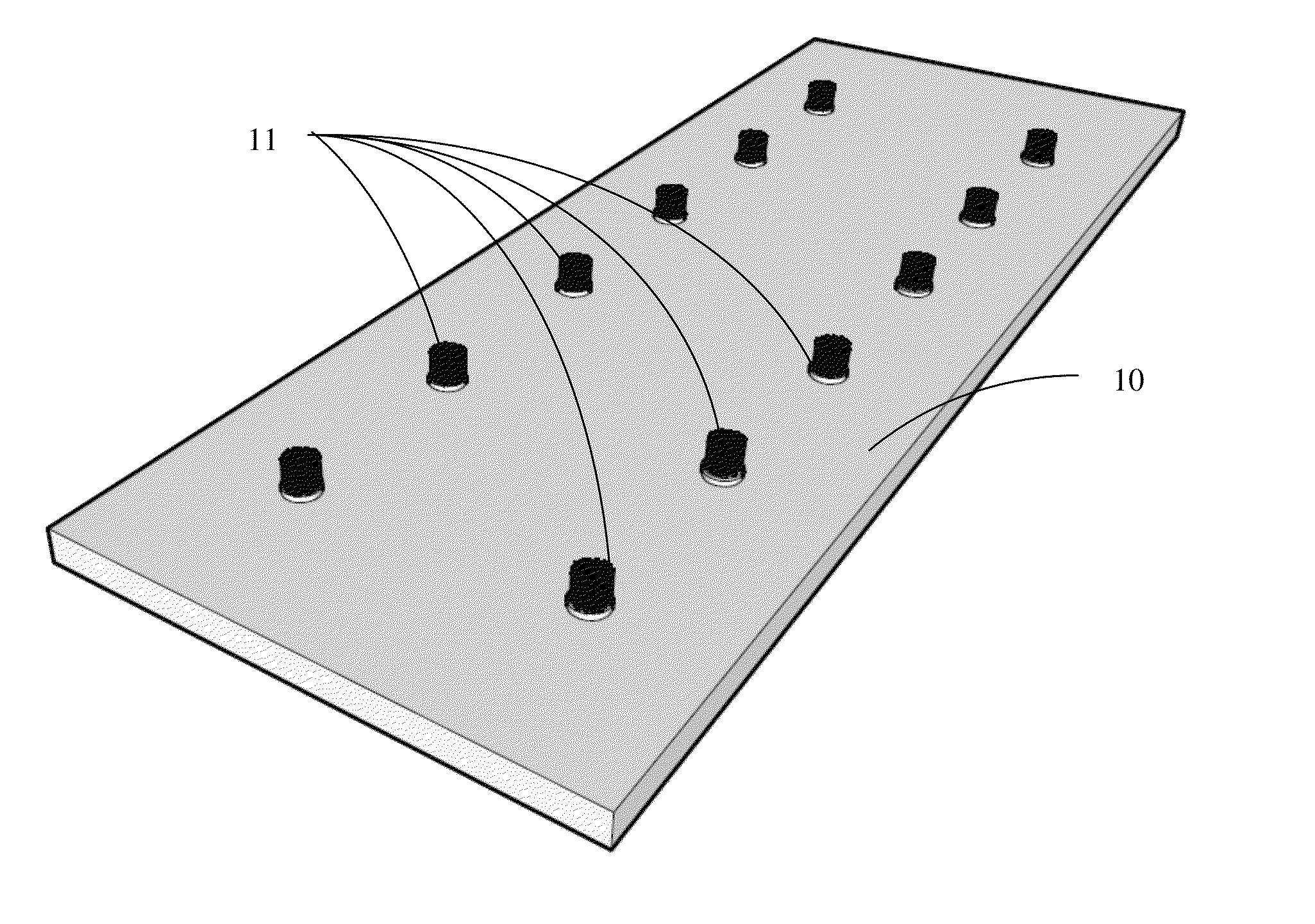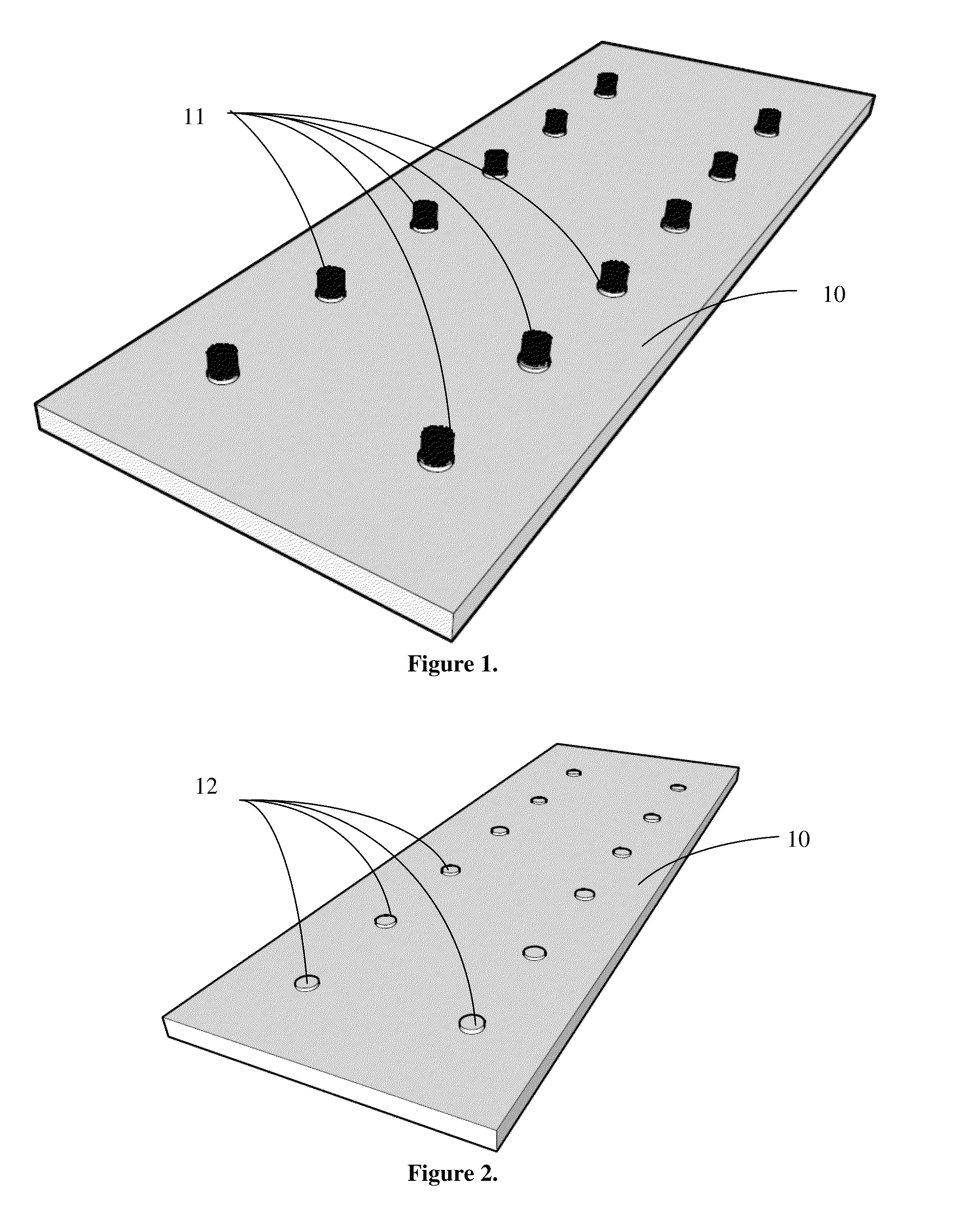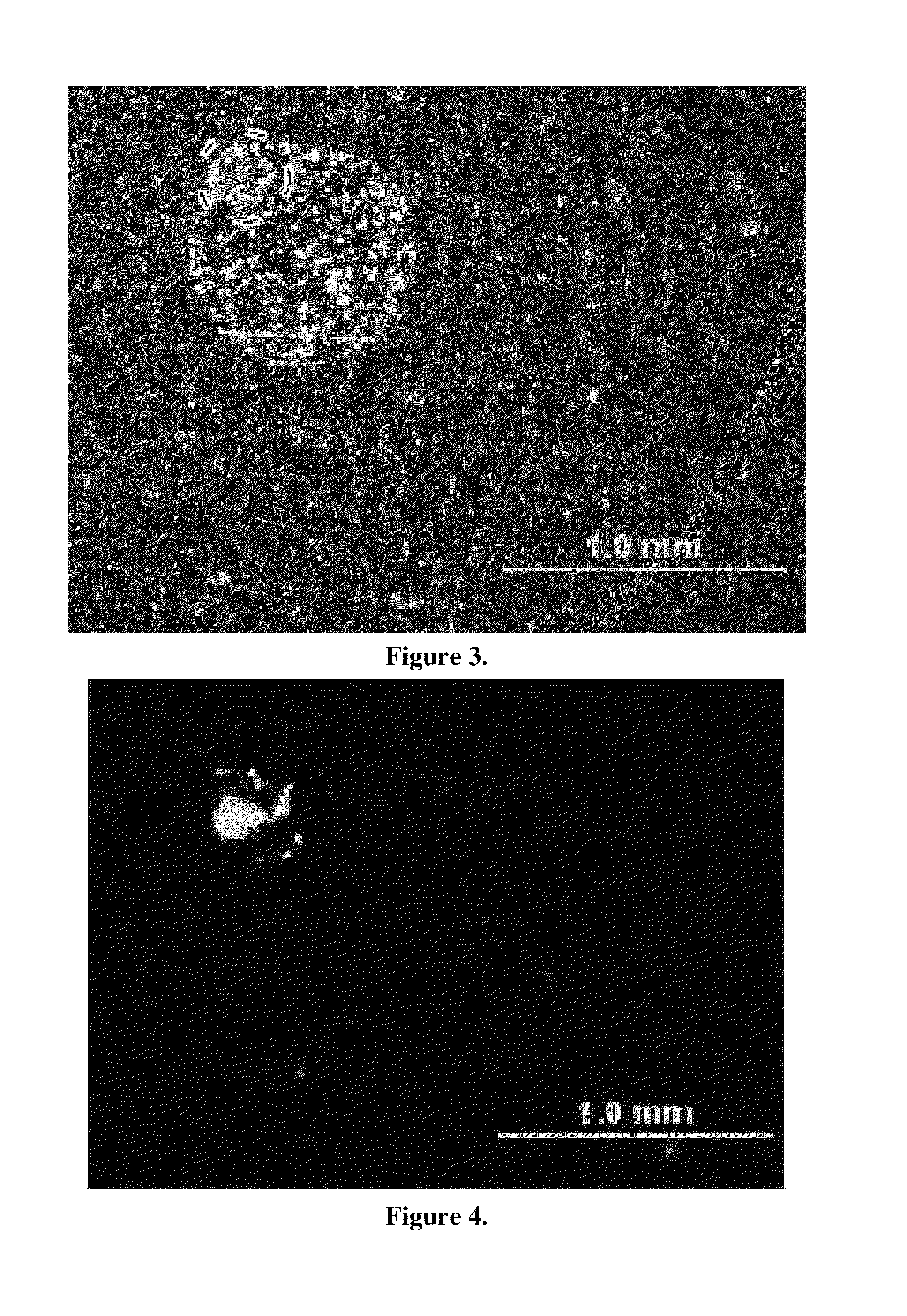Carbon nanotube anchor for mass spectrometer
a carbon nanotube and mass spectrometer technology, applied in the field of mass spectrometer sample anchors, can solve the problems of limiting the total achievable sensitivity, and achieve the effect of preventing supersaturation of the solution and reducing deposition on the area
- Summary
- Abstract
- Description
- Claims
- Application Information
AI Technical Summary
Benefits of technology
Problems solved by technology
Method used
Image
Examples
example 1
[0034]Prior to work with nonpolar matrices, such as HCCA, 3-HPA (water soluble) matrix was tested on a carbon nanotube enhanced substrate. A concentrating effect was witnessed with the carbon nanotube substrate, however it was similar to what can be observed using commercial anchor plates.
example 2
[0035]Analyte / matrix crystallization was compared on traditional target supports versus carbon nanotube-seeded target supports. 0.2 μL aliquots of 250 fmol / μL Mariner CALMIX 1 peptide standard solution (des-Arginine-Bradykinin, Angiotensin I, Glu-Fibrinopeptide, and Adrenocorticotropic Hormone (ACTH); Applied Biosystems (Foster City, Calif.)) mixed in a 3 mg / ml HCCA matrix compound was dropped onto a conventional Bruker “anchor plate” and allowed to evaporate. SEM images of the resulting solid matrix / analyte deposits display a diffuse 200 μm diameter anchor spot residue, seen in FIG. 3. Matrix concentrations were varied proportionally with the analyte, from 0.3 mg / mL to 0.006 mg / mL HCCA, to keep the matrix to analyte ratio constant. The matrix / analyte deposit is considerably larger (˜0.8 mm diameter) than the anchor spot (circled) on the Bruker target support. It was also noted that this large matrix / analyte deposit was similar in magnitude to previous studies on MALDI matrix / analyt...
example 3
[0038]Carbon nanotube anchor spots were found to vastly improve MALDI-TOF-MS signal-to-noise ratios. An Applied Biosystems Voyager DE STR MALDI-TOF and nitrogen laser at 20 Hz firing frequency with 400 micron fiber coupling were used for these experiments. Glu-Fibrinopeptide samples were then digested and mixed in a 2.5 mg / ml HCCA matrix. 0.2 μL aliquots of 250 fmol / μL were applied to either the traditional Bruker support or the carbon nanotube target support and ionized by a laser and run through a mass spectrometer with the operating laser intensity set slightly above threshold levels, and an acquisition of 250 shots per spectrum. The samples were analyzed on single positions on the target support using a delayed-extraction mode (extraction delay 200 nanoseconds). Signal-to-noise ratios for 1570 m / z peak in a variety of analyte concentrations were recorded, as seen in FIG. 6. The nanotube-based anchor spot samples display at least a 3-5× better signal than the traditional Bruker s...
PUM
| Property | Measurement | Unit |
|---|---|---|
| Length | aaaaa | aaaaa |
| Length | aaaaa | aaaaa |
| Area | aaaaa | aaaaa |
Abstract
Description
Claims
Application Information
 Login to View More
Login to View More - R&D
- Intellectual Property
- Life Sciences
- Materials
- Tech Scout
- Unparalleled Data Quality
- Higher Quality Content
- 60% Fewer Hallucinations
Browse by: Latest US Patents, China's latest patents, Technical Efficacy Thesaurus, Application Domain, Technology Topic, Popular Technical Reports.
© 2025 PatSnap. All rights reserved.Legal|Privacy policy|Modern Slavery Act Transparency Statement|Sitemap|About US| Contact US: help@patsnap.com



